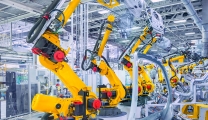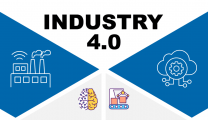What is lean manufacturing?
Lean methodology is a systematic approach to eliminating waste and increasing value for customers by improving processes. It values continuous improvement, respect for people, and delivering customer value. Lean works best for businesses that need to improve their processes and eliminate waste.
What is agile for manufacturing?
Agile methodology is an iterative approach that focuses on delivering quick and incremental changes to a product or service. It values collaboration, flexibility, and continuous improvement. Agile works best for businesses that need to respond to changing customer requirements and market conditions quickly.
What are the primary difference between lean and agile manufacturing?
As a business owner, it's important to stay informed on the latest manufacturing methodologies to ensure that your production processes are efficient and effective. Two popular methodologies that have gained traction in recent years are agile and lean manufacturing. While both approaches aim to reduce waste and optimize production processes, there is some key differences change management in manufacturing involves identifying opportunities for improvement, developing strategies for change, and managing the transition to new processes or systems. It is a complex process that requires a strategic and comprehensive approach to ensure successful implementation and sustained results between the two.
| Comparison | Agile manufacturing | Lean manufacturing |
| Approach | - Focus on flexibility and adaptability in a non-linear process - Emphasizes the ability to respond quickly to changes in customer demand or market conditions |
- Focus on reducing waste and improving efficiency in a linear process - Emphasizes continuous improvement and the elimination of non-value-added activities |
| Production Planning | - Production planning is based on the actual number of customer demand - Emphasizes maximizing flexibility production as the trend of demand changes |
- Production planning is based on a forecast number of customer demand - Emphasizes minimizing inventory and reducing lead times |
| Production Process | - Focus on changeability of production process to meet customer demands - Emphasizes customization and variety in the whole production process |
- Focus on the continuous flow of materials and products - Emphasizes processes standardization as well as variation elimination |
| Teamwork and Communication | - Emphasizes flexibility in cross-functional teams and communication - Focus on collaboration and communication between teams and departments |
- Emphasizes teamwork and communication to achieve continuous improvement - Focus on employee involvement in problem-solving and decision-making |
How can businesses decide if agile or lean manufacturing is best for them?
Choosing between lean and agile manufacturing can be a challenging task for organizations, especially those that are just starting or undergoing a transformation. While both approaches share some similarities, they also have distinct differences that can significantly impact the success of the manufacturing process.

Choosing between lean and agile manufacturing can be a challenging task
To choose between lean and agile manufacturing, organizations should consider the following factors:
1. Production Goals: Organizations should start by defining their production goals and determine whether their primary focus is on reducing waste and improving efficiency (lean) or on flexibility and adaptability (agile). Lean manufacturing is ideal for organizations that want to minimize costs, reduce lead times, and eliminate waste in their processes. On the other hand, agile manufacturing is best suited for organizations that prioritize customization, rapid response to customer demands, and flexibility in their processes.
2. Production Volume and Variety: Organizations should consider the volume and variety of their production processes. If the production processes are relatively simple, with low variation in product design and production volume, then lean manufacturing may be more appropriate. However, if the production processes are complex, with high variation in product design and production volume, then agile manufacturing may be a better fit.
3. Supply Chain Complexity: The level of supply chain complexity can also impact the choice between lean and agile manufacturing. If the organization has a simple supply chain, with few suppliers and customers, then lean manufacturing may be a good choice. However, if the supply chain is complex, with many suppliers and customers, then agile manufacturing may be a better fit, as it can provide greater flexibility and adaptability to changes in the supply chain.
4. Organizational Culture: Organizational culture can also influence the choice between lean and agile manufacturing. If the organization values efficiency, standardization, and continuous improvement, then lean manufacturing may be a good fit. On the other hand, if the organization values collaboration, teamwork, and adaptability, then agile manufacturing may be a better choice.
5. Available Resources: The availability of resources, such as time, money, and expertise, can also impact the choice between lean and agile manufacturing. Lean manufacturing requires a significant investment of time and resources upfront to optimize processes and eliminate waste. In contrast, agile manufacturing may require more resources for ongoing customization and adaptability.












Replies to This Discussion